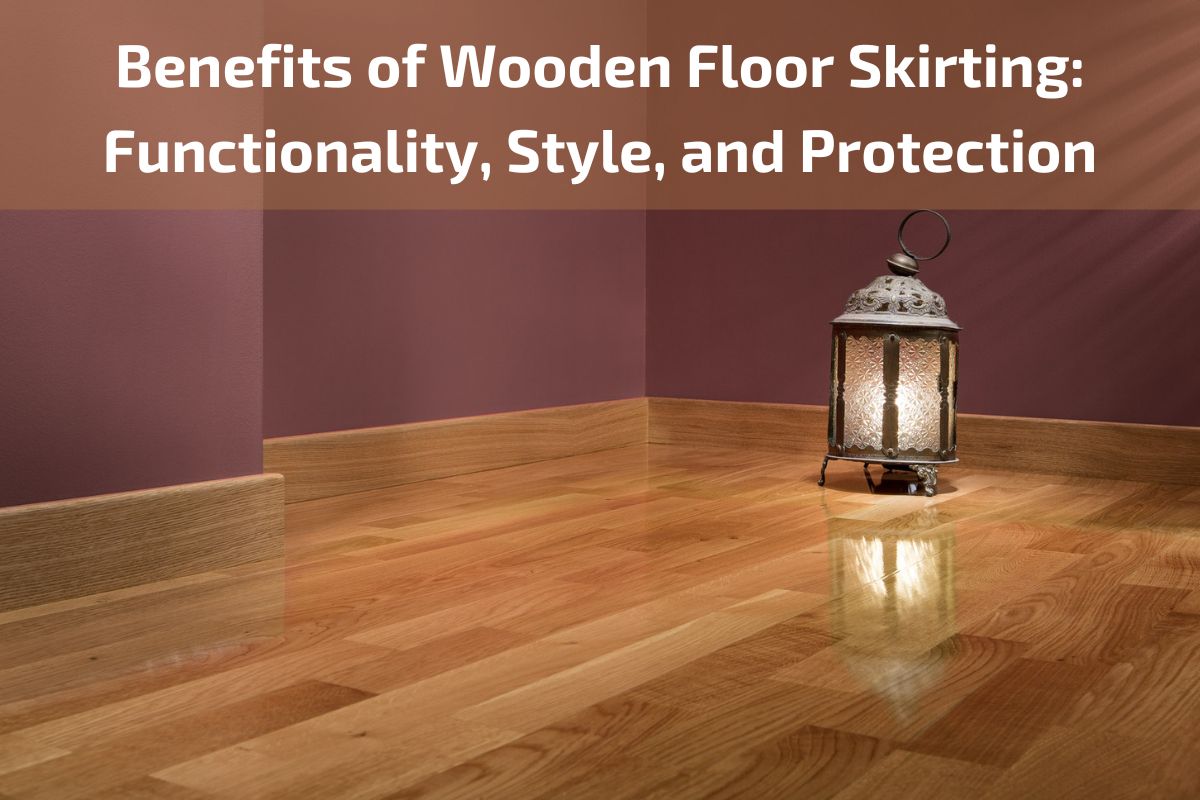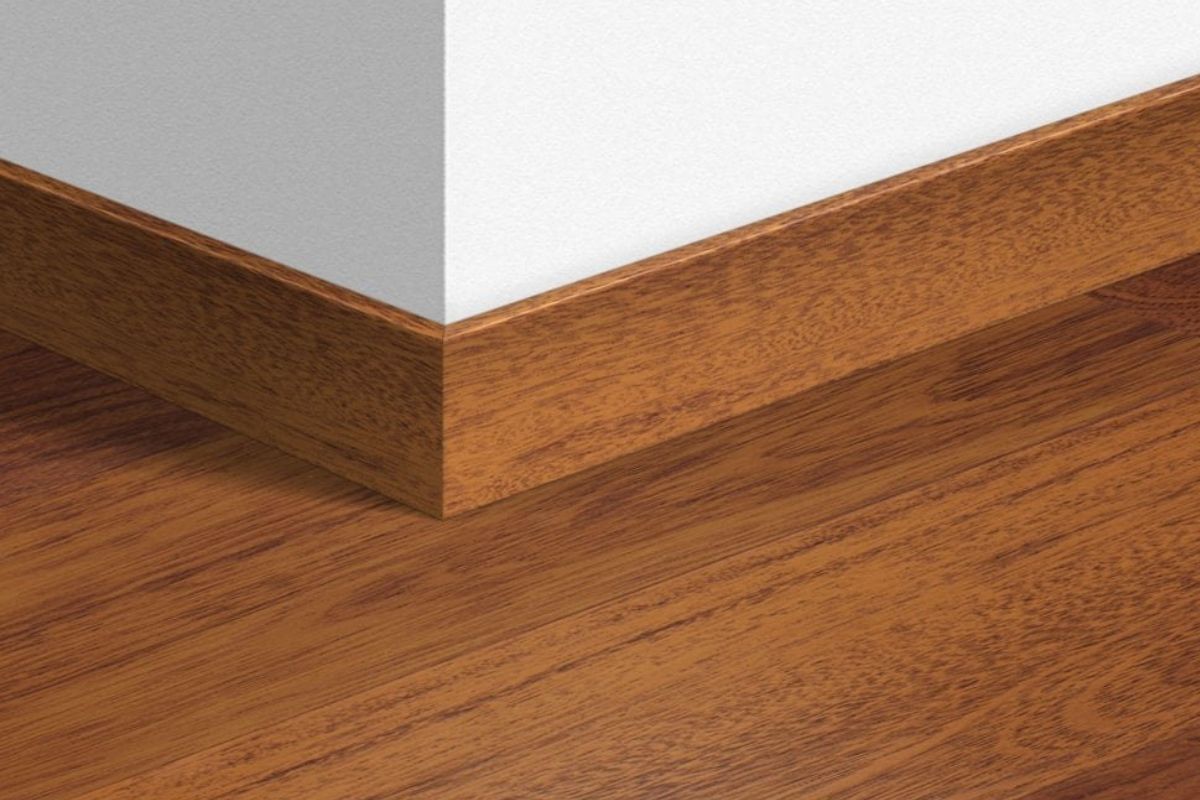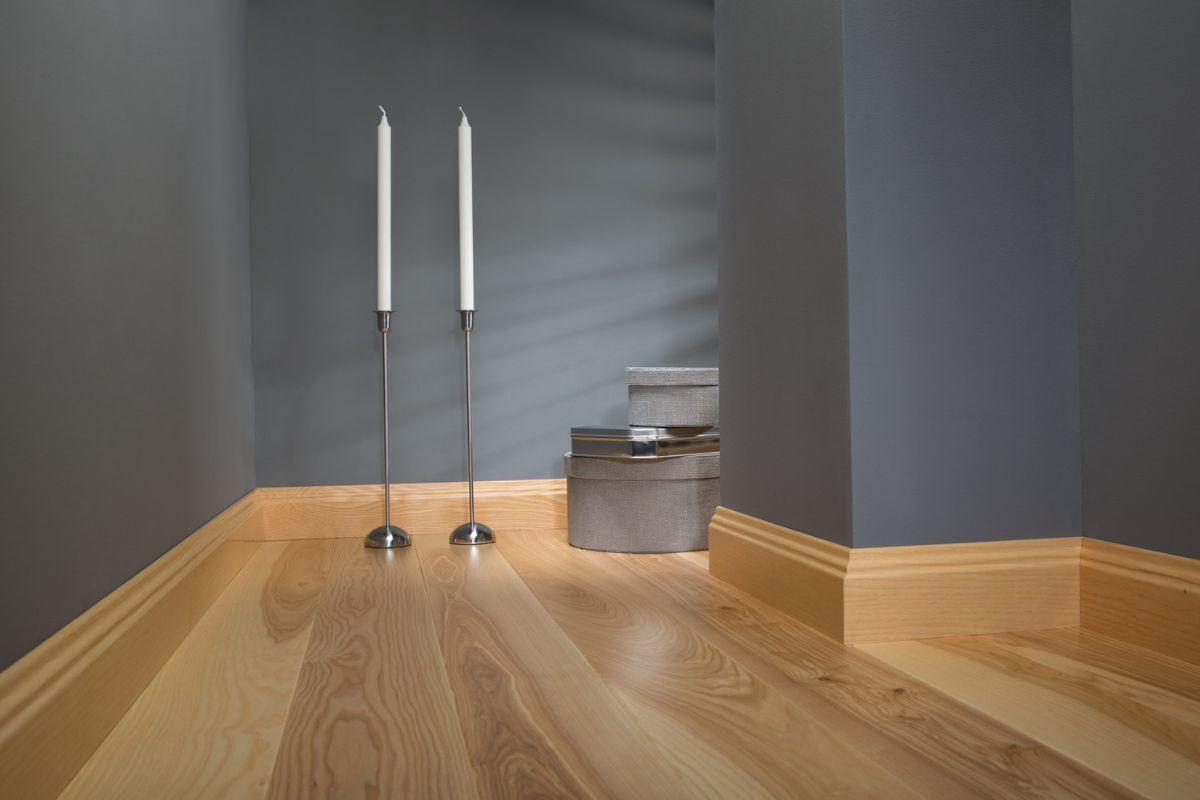
Wooden floor skirting, also known as baseboards or base molding, serves as the finishing touch to any flooring installation, providing both aesthetic appeal and practical functionality. While often overlooked, wooden floor skirting offers numerous benefits that contribute to the overall beauty, durability, and protection of your flooring.
In this guide, we’ll delve into the various advantages of wooden floor skirting, highlighting its functionality, style-enhancing properties, and protective qualities. Whether you’re renovating your home, updating your office space, or embarking on a new construction project, understanding the benefits of wooden floor skirting can help you make informed decisions about your flooring design and installation choices.
Join us as we explore the multifaceted benefits of wooden floor skirting, from its ability to conceal unsightly gaps and imperfections to its role in enhancing the visual appeal of your interior spaces. Discover how wooden floor skirting can elevate the look and feel of your floors while providing essential protection against everyday wear and tear.
The Importance of Wooden Floor Skirting:
Wooden floor skirting plays a crucial role in the overall aesthetics, functionality, and protection of your flooring. Here are some key reasons highlighting the importance of wooden floor skirting:
Enhanced Aesthetics: Wooden floor skirting adds a finishing touch to your flooring installation, creating a seamless transition between the floor and the wall. It covers the expansion gap between the floor and the wall, providing a clean and polished appearance to the room.
Concealing Imperfections: Wooden floor skirting conceals unsightly gaps, uneven edges, and imperfections along the base of the walls, creating a cohesive and visually pleasing look. It helps to mask any irregularities in the flooring installation and provides a polished finish to the room.
Protection Against Damage: Wooden floor skirting acts as a protective barrier, shielding the lower portion of the walls from damage caused by furniture, vacuum cleaners, and foot traffic. It helps prevent dents, scratches, and scuff marks on the walls, extending the lifespan of your interior surfaces.
Prevention of Moisture Ingress: By covering the expansion gap between the floor and the wall, wooden floor skirting helps prevent moisture from seeping into the walls and subfloor. This is particularly important in areas prone to moisture, such as kitchens, bathrooms, and basements, where water damage can lead to costly repairs.
Improved Insulation: Wooden floor skirting helps to improve insulation by sealing the gaps between the floor and the wall, preventing drafts and heat loss. This can contribute to better energy efficiency and lower heating and cooling costs in your home or commercial space.
Sound Dampening: Wooden floor skirting helps to absorb and dampen sound, reducing noise transmission between rooms and floors. This is especially beneficial in multi-story buildings or homes with open floor plans, where noise control is important for comfort and privacy.
Versatile Design Options: Wooden floor skirting comes in a variety of styles, profiles, and finishes to complement any interior decor scheme. Whether you prefer traditional, contemporary, or custom designs, there are wooden floor skirting options available to suit your personal taste and architectural style.
The Benefits of Wooden Floor Skirting
Wooden floor skirting offers a multitude of benefits that contribute to the overall aesthetics, functionality, and protection of your flooring and walls. Here are some key advantages of wooden floor skirting:
Enhanced Aesthetics: Wooden floor skirting adds a finishing touch to your flooring, creating a seamless transition between the floor and the wall. It contributes to the overall aesthetics of the room, enhancing its visual appeal and giving it a polished and cohesive look.
Concealing Imperfections: Wooden floor skirting covers the expansion gap between the floor and the wall, concealing any unsightly gaps, uneven edges, or imperfections along the base of the walls. It helps to create a clean and flawless appearance, masking any irregularities in the flooring installation.
Protection Against Damage: Wooden floor skirting acts as a protective barrier, shielding the lower portion of the walls from damage caused by furniture, vacuum cleaners, and foot traffic. It helps to prevent dents, scratches, and scuff marks on the walls, extending the lifespan of your interior surfaces.
Prevention of Moisture Ingress: By covering the expansion gap between the floor and the wall, wooden floor skirting helps prevent moisture from seeping into the walls and subfloor. This is particularly important in areas prone to moisture, such as kitchens, bathrooms, and basements, where water damage can lead to costly repairs.
Improved Insulation: Wooden floor skirting helps to improve insulation by sealing the gaps between the floor and the wall, preventing drafts and heat loss. This can contribute to better energy efficiency and lower heating and cooling costs in your home or commercial space.
Sound Dampening: Wooden floor skirting helps to absorb and dampen sound, reducing noise transmission between rooms and floors. This is especially beneficial in multi-story buildings or homes with open floor plans, where noise control is important for comfort and privacy.
Versatile Design Options: Wooden floor skirting comes in a variety of styles, profiles, and finishes to complement any interior decor scheme. Whether you prefer traditional, contemporary, or custom designs, there are wooden floor skirting options available to suit your personal taste and architectural style.
Exploring Different Types of Wooden Floor Skirting:
Plain Skirting Boards: Plain wooden skirting boards feature a simple, straight design without any intricate detailing. They provide a clean and minimalist look that complements modern and contemporary interior styles.
Chamfered Skirting Boards: Chamfered skirting boards have angled edges that create a beveled or chamfered profile. This subtle detailing adds visual interest to the skirting while maintaining a sleek and streamlined appearance.
Ogee Skirting Boards: Ogee skirting boards feature a classic S-shaped profile that adds elegance and sophistication to any room. The curved detailing of ogee skirting boards creates a timeless look that complements traditional and period-style interiors.
Torus Skirting Boards: Torus skirting boards have a convex profile with a rounded top and a concave curve along the bottom edge. This traditional design adds a decorative touch to the skirting while providing a sense of depth and dimension to the room.
Bullnose Skirting Boards: Bullnose skirting boards have a rounded or semi-circular profile that creates a soft and smooth transition between the floor and the wall. This type of skirting is often used in contemporary and minimalist interior designs for its clean and modern look.
Lambs Tongue Skirting Boards: Lambs tongue skirting boards feature a distinctive profile with a rounded top that tapers down to a narrow point, resembling the shape of a lamb’s tongue. This decorative detailing adds a touch of elegance and character to the skirting.
Rebate Skirting Boards: Rebate skirting boards have a groove or recess along the back edge, allowing them to sit flush against the wall and hide unsightly cables, pipes, or uneven surfaces. This type of skirting is ideal for creating a neat and tidy finish in rooms with integrated wiring or plumbing.
Scotia Skirting Boards: Scotia skirting boards have a concave profile with a curved top and a flat back edge. This type of skirting is often used to finish curved or irregular walls, providing a seamless transition between the floor and the wall.
Square-edged Skirting Boards: Square-edged skirting boards have a simple, squared-off profile with sharp, straight edges. This minimalist design creates a sleek and contemporary look that complements modern interior styles.
Custom-designed Skirting Boards: For homeowners with specific design preferences or unique architectural features, custom-designed skirting boards offer the flexibility to create bespoke skirting solutions tailored to their individual needs and preferences.
Personalizing Your Wooden Floor Skirting for Your Space
Personalizing your wooden floor skirting allows you to add a unique touch to your space and tailor the skirting to your specific design preferences and architectural style. Here are some ideas for personalizing your wooden floor skirting:
Custom Profiles: Work with a skilled carpenter or millworker to create custom skirting profiles that reflect your design vision. Whether you prefer intricate detailing or sleek, minimalist lines, custom profiles allow you to achieve the exact look you desire.
Unique Finishes: Experiment with different finishes to add texture and depth to your wooden floor skirting. Consider options such as distressed, weathered, or hand-scraped finishes for a rustic, vintage look, or opt for high-gloss or lacquered finishes for a sleek and contemporary feel.
Contrasting Colors: Create visual interest by painting or staining your wooden floor skirting in a contrasting color to your walls or flooring. Choose a bold color to make a statement, or opt for a subtle hue that complements your existing decor scheme.
Incorporate Decorative Details: Enhance the aesthetic appeal of your wooden floor skirting by incorporating decorative details such as carved motifs, inlay patterns, or engraved designs. These intricate details add character and charm to your space, making your skirting a focal point of interest.
Mix and Match Materials: Combine different materials such as wood, metal, or stone to create a unique and eclectic look for your floor skirting. Mix and match textures and finishes to add visual contrast and dimension to your space.
Integrated Lighting: Consider incorporating integrated lighting into your wooden floor skirting for added functionality and ambiance. LED strip lights or recessed lighting can be installed along the base of the skirting to provide subtle illumination and create a warm and inviting atmosphere.
Accessorize with Molding: Enhance the look of your wooden floor skirting with the addition of decorative molding or trim. Crown molding, chair rail molding, or picture rail molding can be added to the top edge of the skirting to create a more finished and cohesive look.
Create a Gallery Wall: Transform your wooden floor skirting into a gallery wall by attaching picture rails or hanging rails along the top edge. This allows you to display artwork, photographs, or other decorative items directly on the skirting, adding personality and style to your space.
Maintenance Tips for Wooden Floor Skirting
Maintaining wooden floor skirting is essential to preserve its beauty and functionality over time. Here are some maintenance tips to keep your wooden floor skirting looking its best:
Regular Cleaning: Dust or vacuum your wooden floor skirting regularly to remove dirt, dust, and debris. Use a soft brush attachment or a damp cloth to gently wipe down the skirting and remove any buildup.
Avoid Moisture Exposure: Wood is susceptible to damage from moisture, so avoid using excessive water or liquid cleaners on your wooden floor skirting. Wipe up spills promptly to prevent water damage, and avoid placing potted plants directly against the skirting to prevent water from seeping into the wood.
Protect from Impact: Wooden floor skirting can be easily damaged by furniture, vacuum cleaners, and other objects. Place felt pads or furniture glides under heavy furniture to prevent scratches and dents, and use caution when vacuuming near the skirting to avoid accidental impact.
Inspect for Damage: Regularly inspect your wooden floor skirting for signs of damage, such as scratches, dents, or chips. Repair any damage promptly to prevent further deterioration and maintain the integrity of the skirting.
Refinish as Needed: Over time, the finish on wooden floor skirting may wear away or become damaged. If the finish is looking dull or scratched, consider refinishing the skirting to restore its appearance and protect the wood. Sand the skirting lightly to remove any old finish, then apply a fresh coat of wood stain or sealant according to the manufacturer’s instructions.
Control Humidity Levels: Fluctuations in humidity can cause wood to expand and contract, leading to warping or cracking of the skirting. Maintain consistent humidity levels in your home to minimize these effects, using a humidifier in dry conditions and a dehumidifier in humid conditions as needed.
Protect from Sunlight: Direct sunlight can cause fading and discoloration of wooden floor skirting over time. Use curtains, blinds, or UV-blocking window film to protect your skirting from prolonged exposure to sunlight and preserve its natural color and beauty.
Professional Maintenance: For deep cleaning or refinishing tasks, consider hiring a professional wood floor maintenance company to ensure the job is done correctly and safely. Professional maintenance can help extend the life of your wooden floor skirting and keep it looking its best for years to come.
Conclusion
In conclusion, wooden floor skirting serves as both a functional and aesthetic element in interior design. Not only does it provide a finishing touch to flooring installations, but it also offers protection against damage, conceals imperfections, and enhances the overall aesthetics of a space. By following proper maintenance practices such as regular cleaning, protecting from moisture and impact, and refinishing as needed, you can prolong the life and beauty of your wooden floor skirting.




